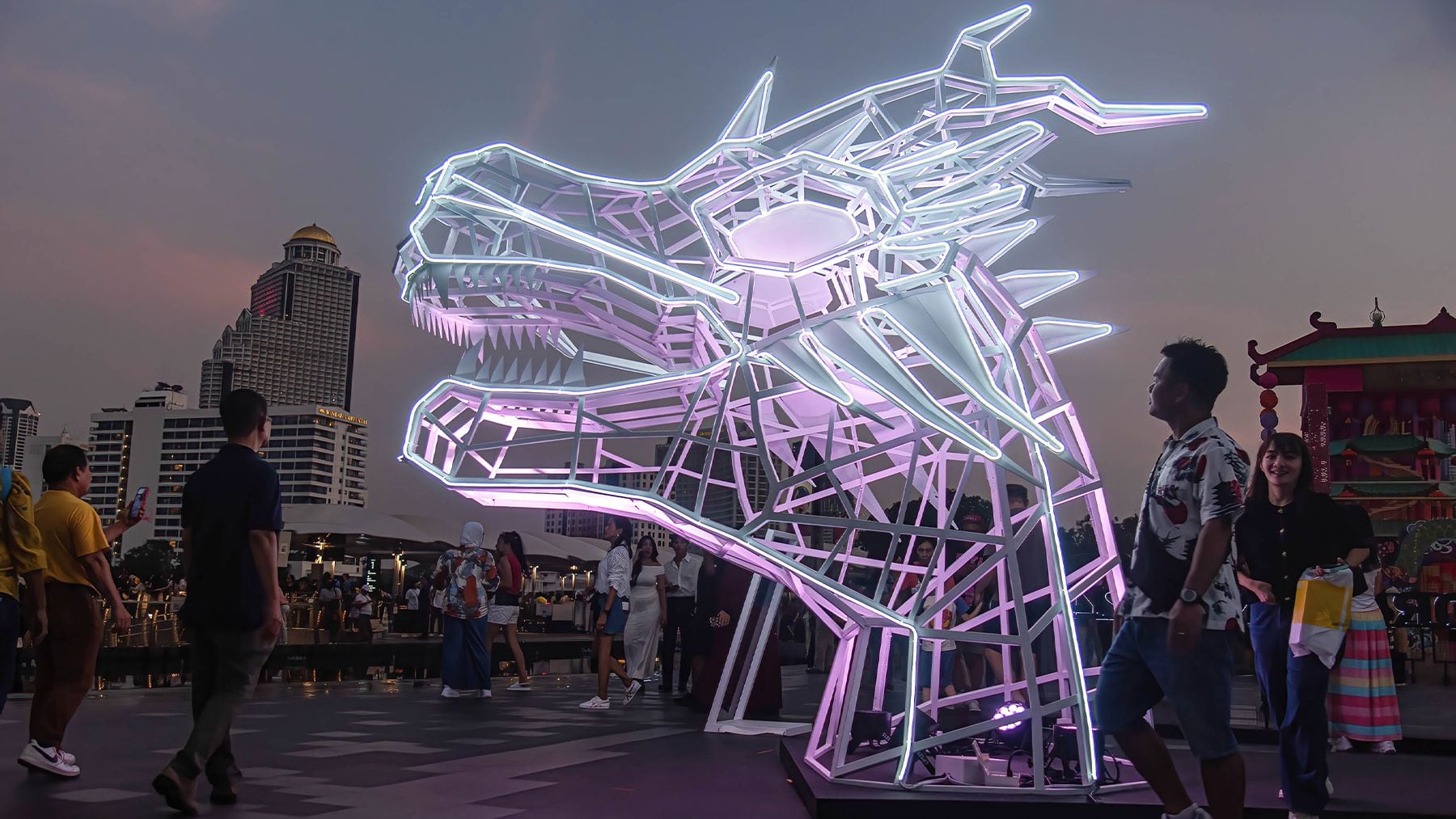
On Feb. 10, China officially ushered in the year of the dragon. The Chunyun travel rush that coincides with Lunar New Year celebrations started ramping up as early as January 26 and isn’t expected to die down until March 5. While last year’s new year may have technically allowed Chinese to travel overseas, this year’s holiday period is for many retailers the first truly ‘post-pandemic’ Chinese New Year and Spring Festival.
Domestic travel recovery has been robust. A total of 480 million trips are expected to be made nationwide during the 40-day period, a 38 percent jump from 2023 and 17 percent rise from pre-pandemic 2019 levels, according to state media CCTV. Severe winter storms interrupted travel across many parts of China last week, although the worst of it had eased by Friday, the eve of Chinese New Year.
Though Chunyun travel is largely domestic in nature, it has also become a barometer for overseas tourism demand. Destinations across the Middle East and Australasia already benefited from China’s initial travel recovery last year, but it is Southeast Asia that will pull ahead of other regions in terms of Chinese travellers this holiday season. Last month, China and Singapore signed a mutual 30-day visa-free entry agreement that went into effect on Feb. 9. Thailand and China also agreed to waive visa requirements for each other’s citizens, beginning Mar. 1.
Bangkok and Singapore are the big winners but Malaysia’s Kuala Lumpur, Thailand’s Chiang Mai, the Philippines’ Manila and Indonesia’s Bali are other top destinations for outbound mainland Chinese travellers this year, according to Trip.com, one of China’s largest travel agencies. Flight bookings to Bali grew 30-fold on the platform compared to the year before; Singapore increased by more than 800 percent; and Bangkok and Phuket by 400 percent. While those figures may seem impressive, they are off a very low base a year prior.
Many retailers across the region have been preparing for the influx. Siam Piwat chief executive Chadatip Chutrakul said that the Thai retail group spent about $5.6 million on Chinese New Year campaigns at four of its malls: Siam Center, Siam Discovery, Iconsiam and Siam Paragon. The latter houses the likes of Dior, Hermès and Burberry. The Tourism Authority of Thailand expects the Chinese New Year festival will generate spending of more than 34 billion baht ($947 million), up 30 percent from a year earlier. It has set an ambitious target of at least 8 million Chinese visitors in 2024.
Capitaland, Singapore’s largest mall operator, which also operates 10 malls across China, said offering elevated experiences and investing in its locations has been a priority. At Raffles City Singapore, where stores like Chanel beauty, Chopard and multi-brand retailer Club 21 are located, the company made renovations to strengthen its luxury positioning and provide unique store experiences such as opening Sephora’s first Store of the Future concept in Asia.
However, expectations for a strong return of overseas Chinese spending are still muted across many markets, according to the International Association of Department Stores (IADS), whose members span Europe, the Middle East, Asia and Latin America.
“Every six months for the past year and a half, we were told they’re coming back,” said Selvane Mohandas, managing director of the association. “They’re coming back, yes, but it’s four times fewer groups coming on a daily basis compared to pre-pandemic. It’s still taking some time to take off again.”
Mathieu Grac, senior vice president at Global Blue, a major VAT refund provider, said that Europe is currently at 50 percent in terms of Chinese footfall compared to pre-pandemic levels. That said, the differences by country are stark.
“Up to January 31 in Europe, we have a very strong acceleration in particular in France. France is back to pre-2019 levels,” said Grac, attributing it to the strength and attractiveness of French brands. “Italy, by comparison, has only seen a recovery to 65 percent.” Meanwhile, in Asia Pacific, Japan was a big draw due to a weak yen.
Grac shared that roughly 80 percent of Global Blue’s overall business are aspirational shoppers who are spending a lot less this year. He warns that “this is where brands will have to adjust.” Defined as spending €3,000 ($3,200) or less on a trip, the middle-class shopper has reduced their spend by 60 percent, Grac said, blaming inflated pricing for flights and hotels for taking wallet share.
Global Blue has made adjustments for shoppers who are watching their wallets more closely. It recently added a faster automatic refund process that can be received via the Alipay app instead of requesting the VAT refund when Chinese shoppers depart the airport. The company has found that travellers who are refunded while still on the trip spend most of that refund on more shopping.
With heightened price sensitivity among aspirational Chinese shoppers, the value of VAT refunds weigh heavier than ever on their shopping patterns. The UK, which since the start of 2021 no longer offers a tax refund, has lost some of its appeal among Chinese according to Dee Corsi, chief executive of the New West End Company, an association that represents retailers on London’s main shopping streets of Bond and Oxford Street.
“Chinese visitors are particularly price sensitive 1707828793, and we are seeing this play out in a persistent gap between footfall and spend, even as visitor numbers recover,” Corsi said. “In September 2023… visitor numbers were within 2 percent of the figure for the same month in 2019 but the amount they spent was down 58 percent.”
The repatriation of luxury spend to the mainland is also having an impact on overseas shopping habits. During the three years that China was closed off during the pandemic, brands spent significant sums in local store networks. Sometimes the new investments have outpaced those in brands’ stores in Europe and the US.
“China has changed, and they upped the game when it comes to local services and practices,” said IADS’s Mohandas. “I visited the Dior salon in SKP [Beijing] and that’s closed off. That’s something that doesn’t really exist in Paris. You can literally use it as your own private club, meaning that if you want to celebrate your birthday tomorrow with a few friends in that salon, that’s possible.”
Harrods has been imaginative when it comes to courting Chinese shoppers. The British department store has opened The Residence in Shanghai, its first private members club, charging annual fees upwards of 150,000 yuan ($20,853) and includes in its services access to a suite of private jets for its high-spending members. Last April, it opened a Chinese restaurant called Dim Sum Terrace on the fourth floor of its London flagship.
“Now the main question is how do you make sure that you are on par even in your historic locations? Some ways of being treated as a customer that were acceptable before the pandemic might not be at all today,” said Mohandas, referring to clients expectations for VIP lounges and services.



